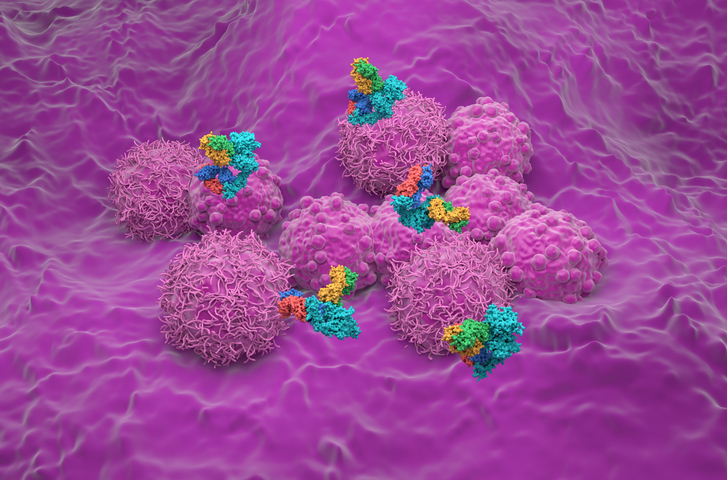Using Dendritic Cell Vaccines to Boost Neoadjuvant Therapy in HER2+ Breast Cancer
By Hatem Soliman, MD - Last Updated: April 29, 2025Hatem Soliman, MD, Moffitt Cancer Center, discusses his pilot study exploring HER2-directed dendritic cell vaccines for early HER2-positive, ER-negative breast cancer. He explains the rationale behind the trial, initial clinical outcomes, the role of intratumoral vaccine delivery in enhancing immune infiltration, and early safety data. His findings suggest a promising strategy to boost immune responses and improve outcomes with preoperative therapy, laying the groundwork for future larger trials.
Transcript
What was the rationale for adding HER2-directed dendritic cell vaccination to neoadjuvant therapy in early HER2-positive, ER-negative breast cancer?
Dr. Soliman: Well, we had known for quite some time that the immune system plays an important role in how breast cancers may behave both from a prognostic standpoint as to how likely the cancer would recur. Tumors that have a more robust immune infiltrate or recognition by the person’s immune system tend to have a better prognosis compared to those tumors that have a poor recognition by the host’s immune system or a less robust response.
And there is also supporting data over the years showing that that could affect as well response to preoperative therapy because tumors that also had a significant immune infiltration were noted to have better responses to preoperative therapy and higher rates of complete elimination.
So taking that information in mind, we wanted to see whether we could, in essence, increase the immune infiltrate in these tumors through some sort of intervention to replicate that type of effect. So you could take tumors that are in essence immunologically “cold,” if you will, and try to turn them immunologically “hot” so that you can in essence sensitize them to your preoperative therapy. And that gave rise to this trial as a way to use dendritic cells to do that type of instigation of the immune response during the preoperative therapy phase.
Can you discuss the immune responses seen with the vaccine and how they related to outcomes?
Dr. Soliman: As far as what we saw for patients that were on the study, and this was, mind you, a small trial that was done more to kind of test the strategy and the feasibility and methodology of administering these dendritic cell vaccines in the preoperative setting. Because at the time it was conceived, there weren’t a lot of studies that were doing this with dendritic cell vaccines prior to normal systemic therapy. So this trial kind of laid the groundwork, if you will, for more definitive larger studies to be able to look at the question.
But what we did see is that when we gave the vaccination, and in essence we would give a series of dendritic cell vaccines that were primed against the HER2 protein for about 3 weeks prior to the start of the first cycle of standard of care chemotherapy, which was known as the TCHP, as the cocktail of four drugs. So it’s Taxotere, carboplatinum, Herceptin, and Perjeta. And we typically would give that over a period of 18 weeks, 6 times. So that’s our standard of care treatment for HER2-positive breast cancer. And then patients would go on to get surgery and also get additional booster shots thereafter.
And we could show that when we gave the vaccination initially, we used intranodal vaccination strategy. So we didn’t inject the dendritic cell vaccine directly into the tumor when we started the study, but we actually injected it into an adjacent draining lymph node. And we could show that the immune responses to the HER2 protein increased over time as patients got through the vaccination sequence. And that’s pretty much what we expected.
We thought we would see an increase in the circulating reactive white cells or immune cells that would react to the HER2 peptide when we gave the vaccine. What was interesting is that we started to develop data preclinically that we wanted to test in the trial showing that actually inducting the dendritic cells directly into the tumor in the breast, not just in the lymph nodes that drain the breast, seemed to promote a much more vigorous immune infiltration. And actual clinical responses and shrinkage of the tumors were observed when we started doing these intratumoral vaccines. And so we actually amended the trial part way to incorporate those intratumoral vaccines. And what we saw in those patients, at least during those initial few weeks, interestingly, is that the number of detectable immune cells in the bloodstream actually didn’t really increase as much with the intratumoral vaccines. In some cases, they may have decreased a little bit, and we think that’s because those cells were getting out of the bloodstream and actually trafficking towards the tumor. And so they were kind of doing their job in the vicinity of the tumor. And samples that we obtained from those tumors and looked at under a microscope indicated that there was an increase in these immune infiltrates within the tumor when patients got the injection in the tumor.
And so some of the immune analysis that we also looked at, again, small sample size, so it’s not definitive, but it did appear that patients that were destined to go on to get a complete response to their preoperative therapy numerically had higher levels of immune killer cells. These CD3-positive immune cells that we’re trying to get to go into the tumor to kill the cancer cells, they seem to have a more robust infiltrate compared to the patients that still had residual disease. So I think it led to interesting data that reinforced our hypothesis, but requires additional study in future trials to be able to confirm that effect.
What were the key safety findings from adding the vaccine, and were any unexpected side effects reported?
Dr. Soliman: The safety profile of the dendritic cell vaccines are excellent in the sense that one advantage is that they’re what we call autologous. So we’re taking the patient’s own dendritic cells out of their body and priming them with these HER2 peptides outside of their body and then re-administering their own cells back to them in the form of this vaccine. So it’s their own body’s tissues and it doesn’t necessarily lead to any kind of allergic reactions or things of that nature.
However, one thing we did see in those patients that get these vaccines is that typical and then in line with other vaccines that you may administer, patients can get injection site redness or soreness where there’s inflammation occurring as a result of the vaccine doing its thing, if you will, and activating the host immune response. Some patients can get the low-grade fevers, occasional chills or flu-like symptoms and those are, again, in line with what you would expect to see in patients that are getting an active vaccination that will stimulate their immune system. Because that’s part of the natural reaction to the immune system waking up is that it’ll start secreting these chemicals and cause these kind of immune-related reactions.
But fortunately we didn’t see any increase or unexpected toxicities that you would see as far as the chemotherapy that was administered. There were no exacerbations of chemotherapy-related toxicities or worsening of therapy-related toxicities. So I would say that the overall safety profile was very encouraging and gave us confidence that we could integrate and weave these dendritic cell vaccines with preoperative therapy in a safe and feasible mean.







 © 2025 Mashup Media, LLC, a Formedics Property. All Rights Reserved.
© 2025 Mashup Media, LLC, a Formedics Property. All Rights Reserved.